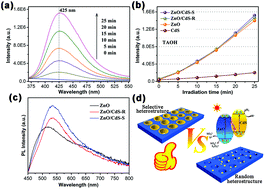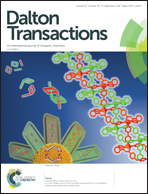Fabrication of selective interface of ZnO/CdS heterostructures for more efficient photocatalytic hydrogen evolution
Abstract
In previous studies, photocatalytic heterostructures between two components have usually been distributed randomly at the material's surface. It is significant and important to fabricate a selective heterostructure interface with more efficient charge separation and transfer. In this study, active pores were first investigated through competitive adsorption, degradation efficiency, and selective corrosion. It was found that selective adsorption-induced photosensitization along with active facets led to selective photocorrosion around the pores in ZnO nanosheets. Then, comparison between the properties of selectively and randomly distributed ZnO/CdS heterostructures is presented, namely, phase composition, morphology, pore size, absorbance, electronic band structure, photocurrent density, electrochemical impedance, and hydrogen evolution. Due to the Z-scheme, ZnO/CdS heterostructure selectively bound at the active pores, due to which more efficient charge separation and higher hydrogen evolution were achieved for ZnO/CdS-S. Thus, fabrication of selective heterostructure interface endows ZnO/CdS with more efficient hydrogen evolution.



 Please wait while we load your content...
Please wait while we load your content...